
Objectives of the service
An estimated 1 of 4 people in Europe has pollen allergies. This has a big impact on both peoples’ health, quality of life as well as costs for society. Yearly costs related to sick leave in Norway alone are calculated to be 10 billion NOK.
To help people affected by pollen better plan their daily activities, we have developed a pollen model to quantify and forecast pollen levels. The model uses satellite data, weather data, ground measurements and topography to forecast pollen risk levels down to 40x40 metre resolution.
Our pollen forecasts currently cover Norway. In this project, we are expanding the service to Sweden and other countries in Europe and are automating our model runs to tackle the larger volume and complexity.
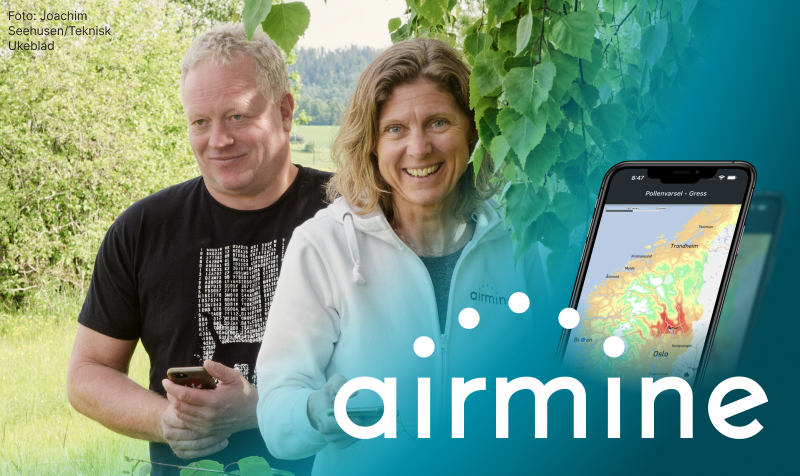
Users and their needs
Our end users are persons allergic to pollen. About 20-25% of the population in Europe is allergic to pollen, and the population is largest and increasing in the age group between 7-20 years.
People allergic to pollen need to know current pollen levels for different pollen species to adjust their daily activities and medication. The users need forecasts that cover places they spend time, and they need forecasts they can trust.
Our customers are primarily in the OTC/pharmacy segment and the public municipality markets. The first segment needs to optimise their marketing spending for allergy medication, as well as increase traffic to their websites. The local authorities, such as municipalities, wish to provide useful and unique information to their citizens, to help mitigate pollen allergy symptoms.
Service/ system concept
Airmine Pollen app - pollen forecasts in your pocket
Our mobile app, Airmine Pollen, is the key product for private consumers.
The app offers pollen risk forecasts for today and tomorrow, risk maps and a pollen diary for logging of allergy symptoms.
We currently cover the Nordics, UK, South-east Australia and the Montevideo-Buenos Aires region. In addition, we offer pollen risk for major cities in Poland, India, USA, South Africa, Mexico and South Korea.
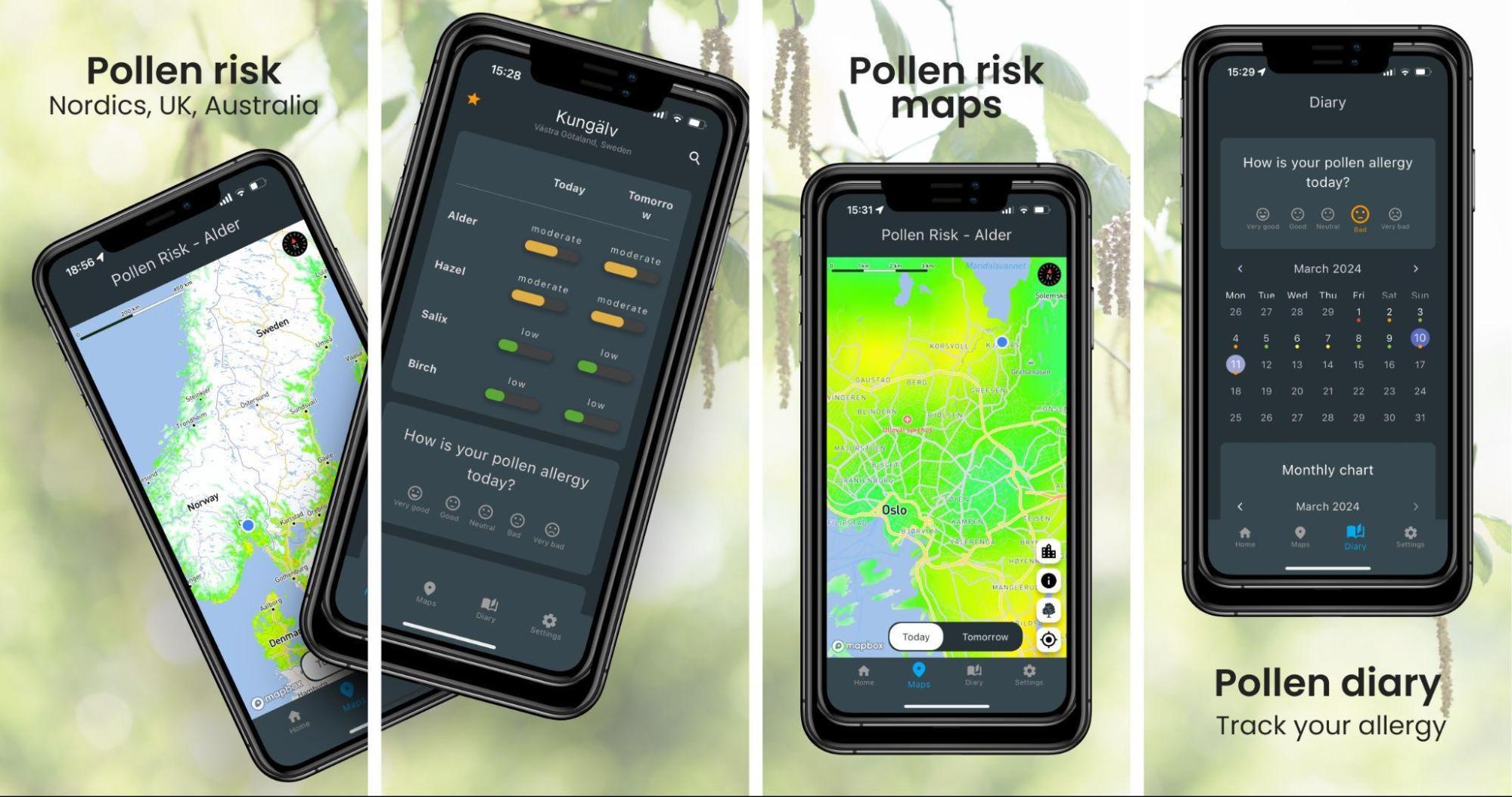
Pollen forecasts delivered as web elements
To our B2B customers, we offer a range of web-based products:
-
Pollen risk maps as web element
-
Detailed pollen risk maps for municipalities
-
Pollen risk presented in table format
-
Embedded element for newspapers/media
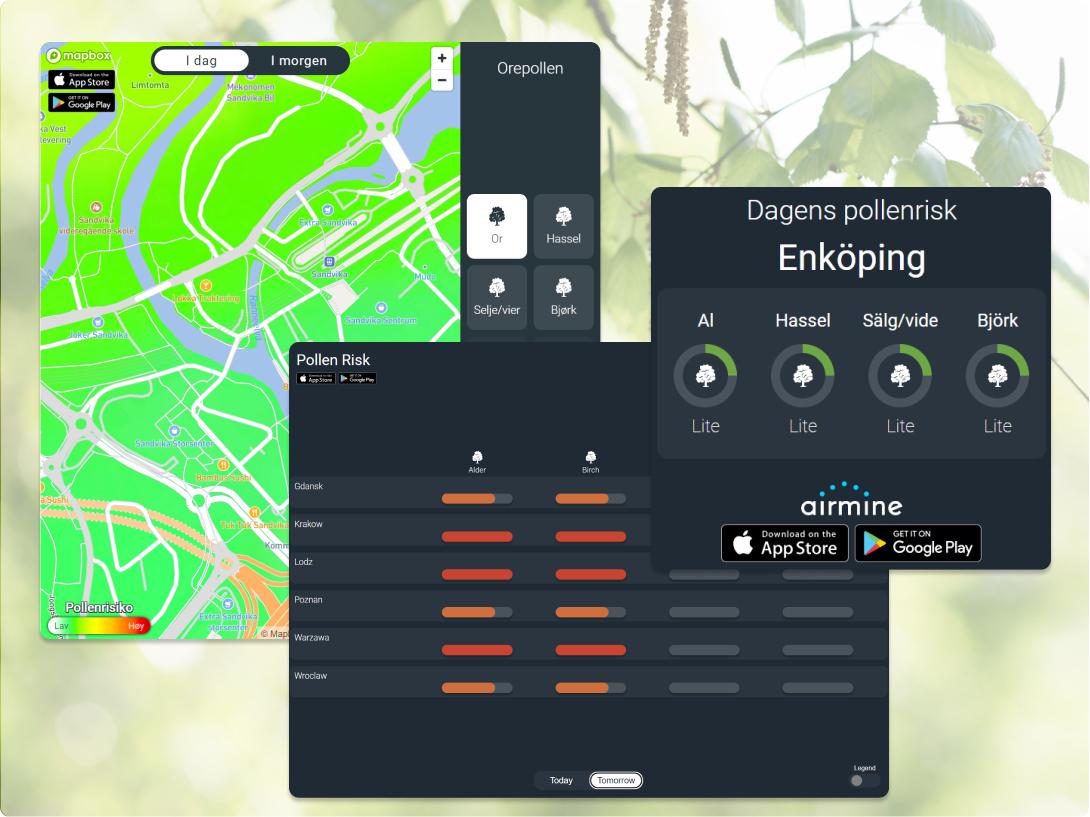
Pollen forecast API
Our pollen risk forecasts are also available through an API, for use in signage solutions or on websites.
Space Added Value
We use images from Sentinel-2 to create land-use and plant species classifications by machine learning. This forms the basis for our pollen risk forecasting model.
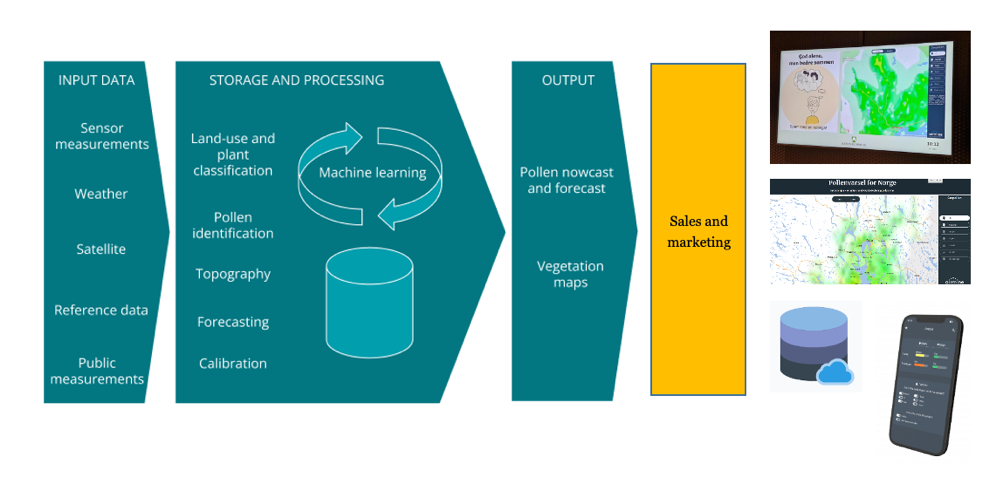
Examples of species weigh maps created from Sentinel-2 images, showing alnus (alder) for the Nordic countries:
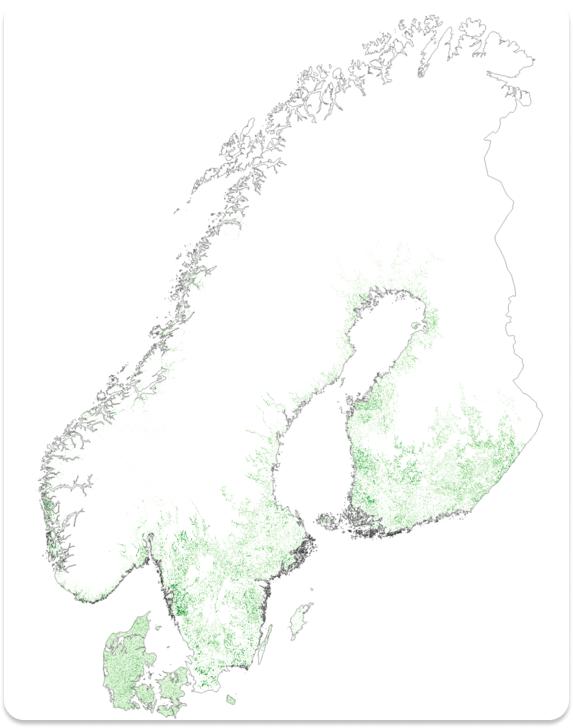
Current Status
Land-use classification
We have implemented an algorithm for identifying and downloading cloudless Sentinel-2 images.. We have automated the process as much as possible, it is easily expandable to new regions. Land-use classification is done by machine-learning.
Species classification
We have assessed allergenic species we will forecast in Sweden and Finland and have identified their habitats using the same methodology that we have used in Norway, i.e., setting up algorithms for classification of deciduous species according to latitude, humidity and local tree line.
Similarly, we have assessed relevant species for our regions in Australia, South Africa, Mexico and Argentina/Uruguay. The classification has been done for south eastern Australia, while we use a simplified model for the other regions.
Pollen risk forecasting model
We have tuned our model environment for speed and volume and made it more generic to facilitate expansion to new regions. The forecasting model now runs daily for UK, Nordics, South-east Australia and the Buenos Aires-Montevideo regions.
Market launch
We have launched our Airmine Pollen app worldwide, targeting with ads the regions where we offer forecasts. We monitor cost-per-installation and general uptake, to improve our campaigns and to detect market interest.
The app was launched in May 2023 and has now reached a total of 40k installations.
As for the B2B market, we have signed up several major pharma companies in the Nordics that display our pollen forecasts on their websites and sold our pollen risk forecasts to a dozen municipalities in Sweden and Norway.


